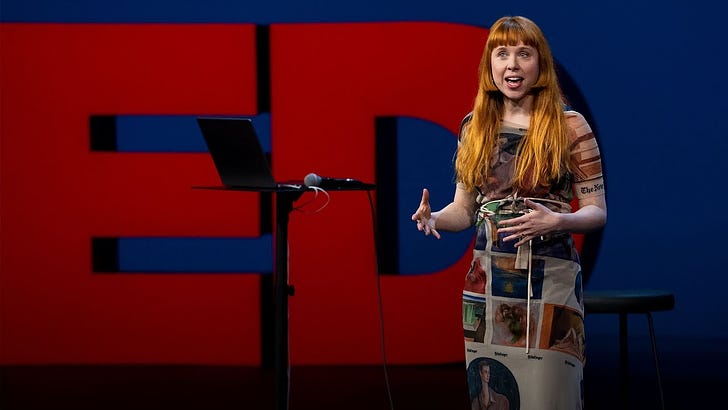Holly+ is Singer's Holly Herndon's Voice Clone And She Wants You to Use It
Controlling your voice by sharing it
Holly Herndon introduced her voice clone in July 2021 and demonstrated it in a popular Ted Talk in April of this year. Herndon’s voice clone, Holly+, was created in collaboration with Voctro Labs and Never Before Heard Sounds. It can transform anyone’s voice into Holly’s in real time or by transforming an audio recording. The singer Pher demonstrated the real-time modulation in the Ted Talk video.
Herndon was in the news again this week for using her voice clone in a music video where she sang Dolly Parton’s famous song Jolene. To be clear, the headlines may mislead you into thinking Herndon is using a deepfake voice of Dolly Parton. That is not the case. Herndon is used Holly+ to render the vocals and it is a good demonstration of how realistic her own deepfake voice clone is.
Extending the Artist
While many people have focused on deepfake threats to intellectual property rights, Herndon is not worried about this from a legal perspective. In the launch of Holly+ in 2021 she cited several legal cases that protect the right of public figures to their likeness, including their voice.
Instead, Herndon is focused on what the technology can do from a creative perspective. In an interview with Coindesk earlier this year, Herndon commented,
My idea of what’s natural or what isn’t may be slightly different. I became obsessed with vocal processing. I was thinking, what are the physical limits of my voice, and how can I use technology to go beyond those physical limitations? I can use freeze functions to never have to breathe. I can use transposers to hit registers I never could physically.
For me, a machine learning model of my voice is an extension of that. That model never has to breathe. It has perfect pitch. It can sing in Hindi with a perfect accent. I can’t do that. So for me, it’s still my one-of-one voice. But I’ve always seen technology as something that lets me do something beyond my immediate physical limitations.
Herndon came to this conclusion from a technical perspective. She earned a PhD while studying at the Stanford Center for Computer Research in Music and Acoustics. Not only does the voice clone enable Holly to do things that she cannot physically, it enables her voice to sing in languages she does not know and have her voice perform in multiple places simultaneously.
Use My Voice Please
More remarkably, Herndon has a solution where you can upload any audio and have it rendered in her voice. I uploaded a short clip of me speaking and it didn’t work. The audio file I got back was poor and did not in any meaningful way reflect what I said in that recording.
However, there are plenty of demonstrations of it working and Herndon seems dedicated to “getting her voice out there,” so to speak. This is the same model that Soul Machines implemented for Carmelo Anthony’s digital Twin, Hour One has done for Taryn Southern and Dom Esposito, and Deepbrain did for the President of South Korea.
You will start seeing a lot more of these examples very soon because celebrities see digital twins, whether visual or audio only, as a way to engage with fans in new ways and drive more licensing revenue.





